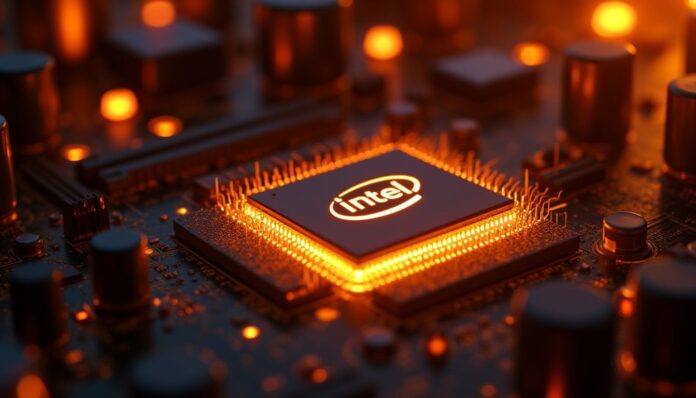En el dinámico mundo de los semiconductores, Intel emerge nuevamente como un jugador crucial, recibiendo respaldo de analistas financieros que destacan su potencial para rivalizar con TSMC, el actual líder del sector. Gus Richard, analista de Northland, subraya que Intel es «la única alternativa a TSMC» en el desarrollo de tecnologías de fabricación y empaquetado avanzadas para circuitos integrados de próxima generación.
Durante el reciente Simposio VLSI 2025, Intel presentó el proceso de fabricación 18A, que impulsará los procesadores Panther Lake para consumidores y servidores Xeon Clearwater Forest, basados en núcleos E-Core. Este nuevo desarrollo promete un incremento del 30% en la densidad de integración respecto al proceso Intel 3, un 25% más de frecuencia con el mismo consumo energético y una reducción del 36% en el consumo de energía a igual frecuencia. Estas métricas posicionan a Intel cerca del rendimiento del nodo de 2 nanómetros de TSMC, pronosticando que ambas empresas estarán tecnológicamente equiparadas en 2026.
Beyond the manufacturing process, Intel is also positioning itself as a leader in advanced packaging, a critical component in enhancing the performance and efficiency of complex architectures. Richard emphasizes the potential shift of Intel towards a model specializing in System-in-Package (SiP) packaging, allowing the integration of multiple chips within a single encapsulation. This advancement would not only highlight Intel as a silicon manufacturer but also as a comprehensive provider of advanced solutions in an ecosystem increasingly focused on heterogeneous and 3D packaging.
From a geopolitical perspective, Richard hints at the strategic value of Intel in response to potential escalations in East Asia, such as a hypothetical conflict between China and Taiwan. In such a scenario, Intel would represent a secure Western alternative, crucial for mitigating the vulnerabilities of the Asian supply chain.
Intel is currently expanding its Fab 52 and Fab 62 facilities in Chandler, Arizona, reflecting a concentrated effort by Western powers to relocate advanced semiconductor production away from global risks. Michelle Johnston, Intel’s product director, confirmed at the BofA 2025 Global Technology Conference that the company has adopted a policy to discontinue the development of any product that does not promise at least a 50% operating margin, signalling a strategic focus on long-term profitability.
Although Intel faces persistent challenges in its transformation process, optimists like Richard believe that with its technology, execution capacity, and state backing, Intel is poised to seriously contend with TSMC in the coming years. Its technological proximity, leadership in packaging, and enhanced manufacturing capacity in the U.S. could restore Intel’s prominence and position it as a cornerstone in Western digital sovereignty.
The current target price for Intel shares stands at $28, rated as «outperform,» reflecting a positive outlook on the company’s potential for recovery and leadership in the semiconductor industry.
In summary, Intel re-emerges with renewed vigor in the post-nanometric era, ready to compete on multiple fronts: design, manufacturing, packaging, and the geopolitical landscape of technology.
Más información y referencias en Noticias Cloud.



